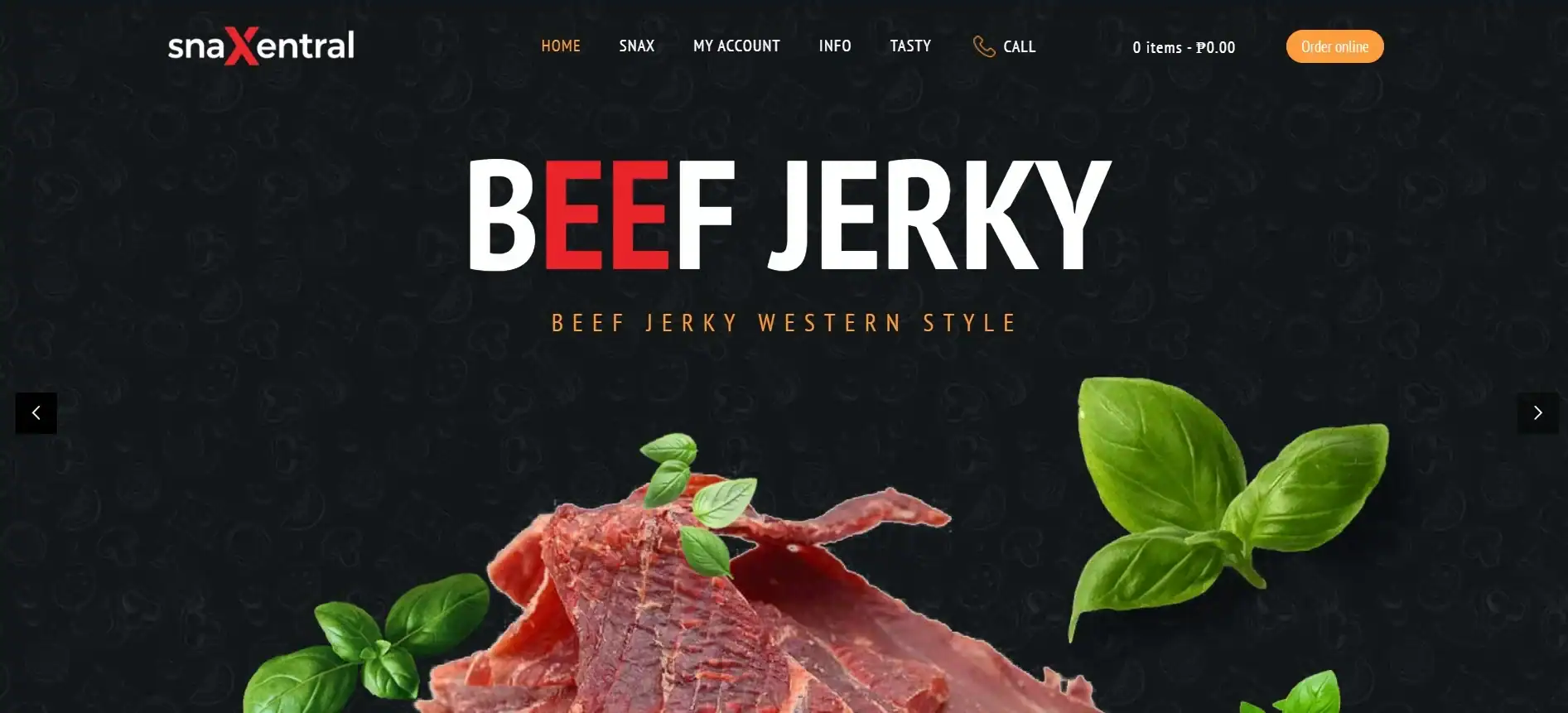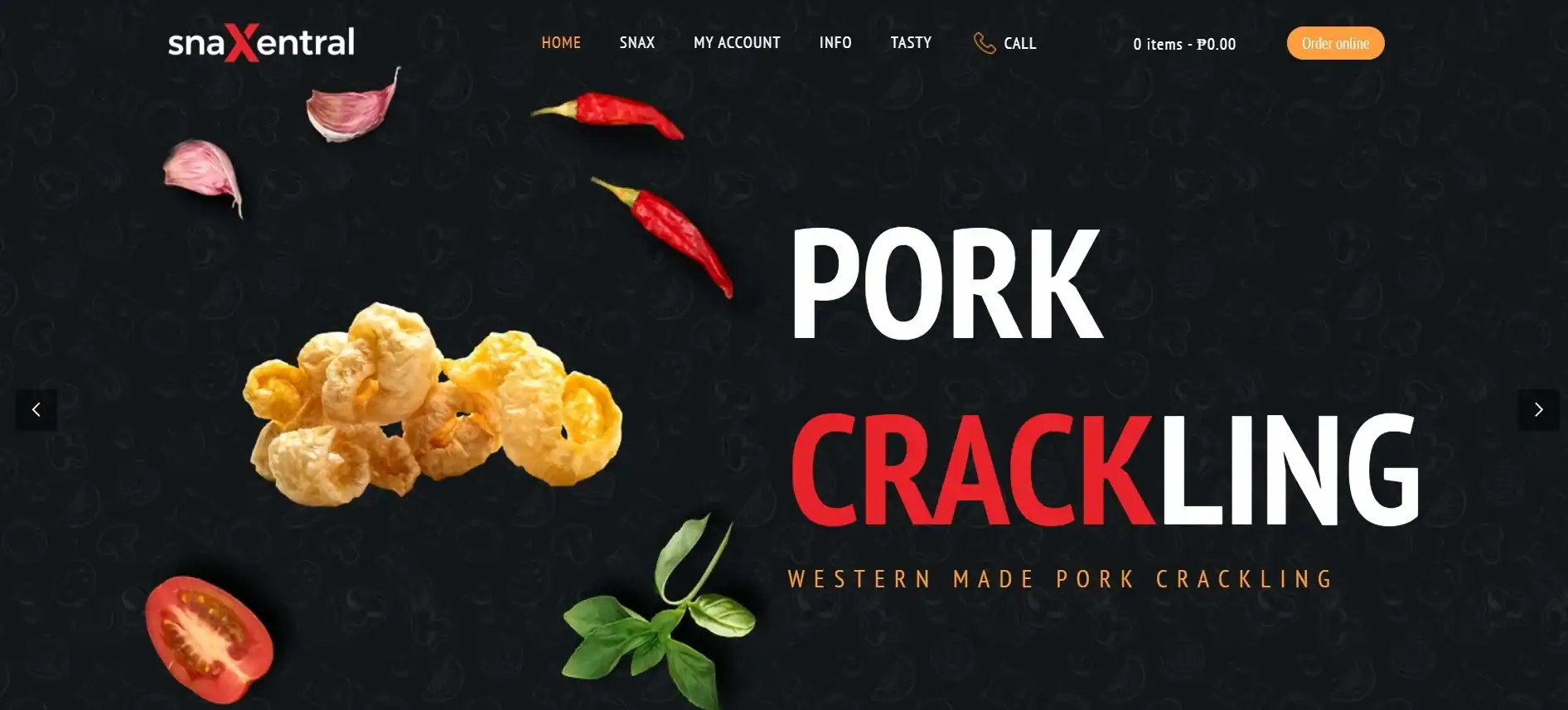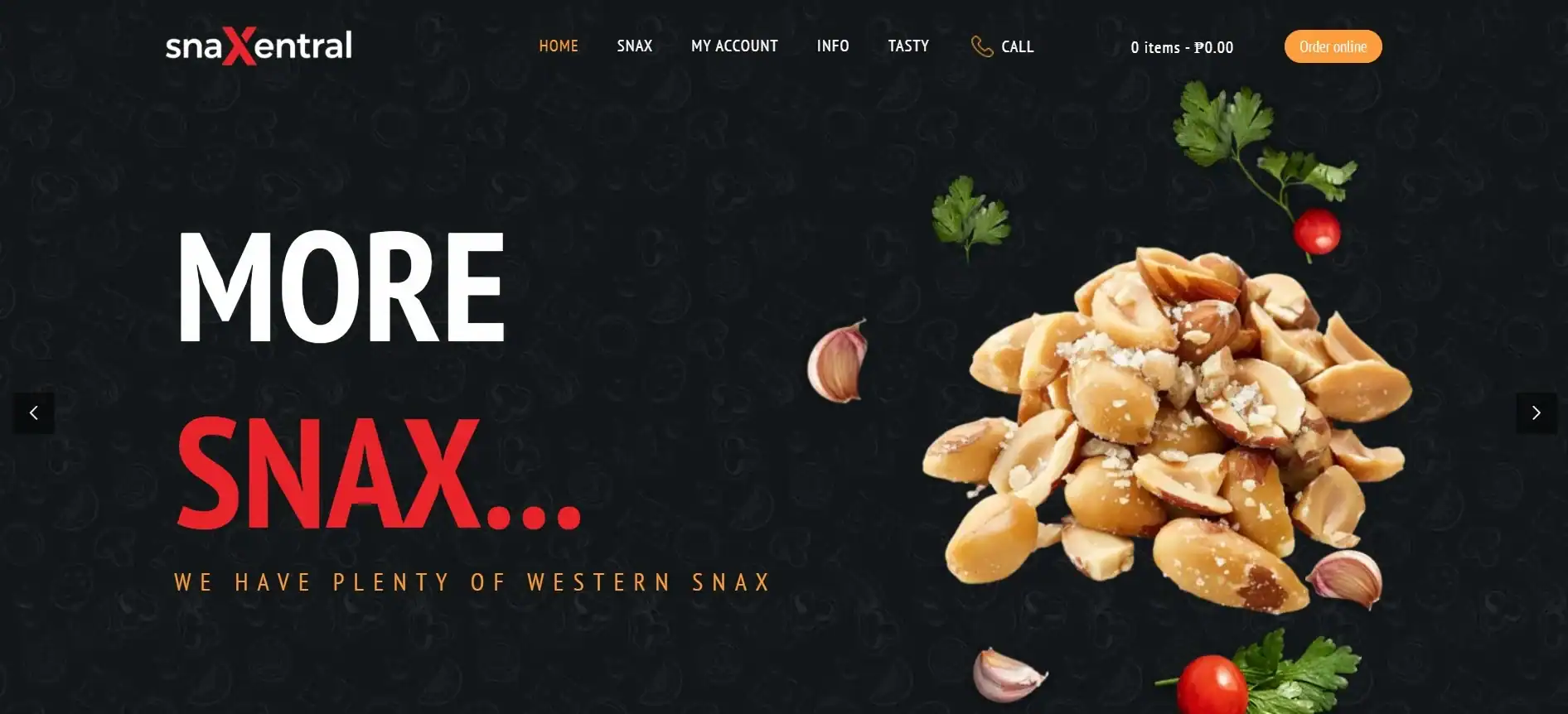This is a team-style case study written for our web development blog. We built the snaXentral e-commerce site for a Filipino beef jerky brand and optimized it for both Google Search and AI answer engines (ChatGPT, Gemini, Perplexity). Below you’ll find a Q&A format that’s easy to scan, copyable FAQ schema, exact figures, and practical steps you can reuse for client projects.
What is Snaxentral and why did they need a site?
Q: Who is Snaxentral?
A: Snaxentral is a Filipino snack brand focused on premium beef jerky for Westerners. They sell a range of flavors aimed at Westerners who can’t find traditional beef jerky, crackling, meat pies, sausage rolls etc. in the Philippines.
Q: Why build a website for beef jerky?
A: A direct-to-consumer store helps the brand control pricing, collect customer data, and turn one-time buyers into regulars. For Snaxentral, a fast, secure online store also helps reach OFWs and nationwide customers who don’t visit physical bazaars.
️ How did we build the site — tech & tools?
Q: What platform and stack did you choose?
A: We used WordPress + WooCommerce for flexibility and easy client edits. Key tools included:
- Elementor — visual page builder for landing pages and promos.
- LiteSpeed Cache — for server-side caching and image optimization.
- Cloudflare CDN — for global delivery and extra security.
- RankMath — on-page SEO signals and schema handling.
- ShortPixel / WebP — compressed product images for fast loads.
Why this stack? It balances speed, cost, and the client’s ability to self-manage products without a developer every time.
Q: Who on the team worked this project?
A: Our team: a project lead, a UX/UI designer, two front-end devs, a back-end dev, and a content/SEO specialist. Together we’ve shipped 100+ e-commerce projects over the last 8 years. This experience shaped key decisions: speed-first image workflows, fast checkout flows, and clear product content optimized for AI snippets.
⚡ Performance & UX — what results did we hit?
Q: How fast did the site become?
A: After optimizations, the site’s official scores were:
- Google PageSpeed — Desktop: 97/100
- Google PageSpeed — Mobile: 93/100
Fast pages reduce bounce and increase conversions. Those numbers are exact and measured during the launch audit.
Q: What UX choices improved sales potential?
- Short checkout (2 steps): shipping + payment.
- Sticky cart with clear CTA on product pages.
- Product detail sections: ingredients, nutrition facts, storage tips.
- Trust signals: SSL badge, secure payment icons, and visible contact info.
SEO & AI optimization — how did we make the site AI-citable?
Q: What makes a site AI-citable?
A: For AI assistants to quote your site confidently, the content must be clear, structured, and authoritative. We added:
- FAQ schema (JSON-LD) so search engines and AI can pull short answers.
- Short Q&A sections within pages for easy snippet extraction.
- Semantic keywords such as: beef jerky Philippines, protein snack, pasalubong jerky, buy jerky online PH.
- Exact facts & numbers (e.g., PageSpeed scores, grams of protein) for trustworthy quotes.
These steps help AI models return accurate citations like “According to snaXentral, beef jerky contains ~9–10 g protein per 28 g serving.”
Design — how do you show texture and flavor online?
Q: How did visuals represent taste and quality?
A: Show, don’t tell. We used:
- High-resolution close-ups showing jerky fibers and glaze.
- Hero shots with lifestyle context—road trip, merienda, gym snack.
- Color palette: warm browns and burnt orange to suggest smoke and caramelized flavors.
- Short micro-copy — e.g., “Perfect with beer or as pasalubong.”
Tip: always include a scale shot (pack beside a coin or phone) so buyers know portion size.
Security, compliance & payments
Q: How did you make payments secure?
A: Implementations included:
- HTTPS / SSL sitewide.
- PCI-compliant payment gateways (PayPal, major credit cards).
- Daily off-site backups and admin IP restrictions.
- Privacy policy aligned with the Philippine Data Privacy Act (RA 10173).
These measures help reduce chargebacks and increase shopper trust — both are conversion boosters.
Local market context — is there demand for jerky in PH?
Q: How big is the snack market?
A: The snack food market in the Philippines is large and active. Industry estimates show the local snack market was valued at over ₱220 billion in 2024. Protein snacks are an expanding segment as health-conscious consumers look for portable options. (See Sources & References below.)
Q: Who is the target customer in the Philippines?
- Commuters & students — quick merienda on-the-go.
- Fitness enthusiasts — high-protein snack between meals.
- OFWs & balikbayans — buying pasalubong or sending care packages.
- Gift shoppers — premium packs for birthdays & holidays.
Content & conversion — what pages matter most?
Q: What content drives organic traffic and conversions?
A: Pages we prioritized:
- Home — hero, bestsellers, trust badges.
- Shop — easy filters for flavor, spice level, pack size.
- Product pages — specs, nutrition, shipping times.
- About — brand story and local sourcing notes.
- Blog — recipe ideas, jerky pairings, storage tips (SEO content).
Short paragraphs, clear headings, and FAQ sections on each product page help both humans and AI find answers fast.
Quick checklist — launch readiness
| Item | Status | Why it matters |
|---|---|---|
| Mobile-first responsive design | Done | Most PH shoppers are on phones. |
| PageSpeed optimizations | Done (Desktop 97 / Mobile 93) | SEO & conversion uplift. |
| FAQ JSON-LD | Done | Makes site AI-citable and improves SERP features. |
| Secure checkout (SSL + PCI) | Done | Protects customers and reduces abandonment. |
| Analytics + conversion tracking | Done | Measure what works and iterate. |
Step-by-step: How we ran the project
Q: What process did you follow?
- Discovery (1 week) — brand goals, buyer personas, key products.
- Wireframes & design (1–2 weeks) — mobile-first mockups.
- Development (2–3 weeks) — WooCommerce setup, payment integrations, product uploads.
- Optimization & QA (1 week) — speed audit, checkout tests, security checks.
- Launch & monitoring (2 weeks) — monitor analytics, quick bug fixes, heatmap checks.
Total timeline: 6–8 weeks from kickoff to stable launch for an MVP e-commerce store like Snaxentral.
️What we learned — developer takeaways
Q: What should other dev teams copy?
- Use clear Q&A on product pages. It helps AI and users alike.
- Prioritize speed first. Small images + lazy load = big gains.
- Automate backups and security scans from day one.
- Make the client able to edit products quickly (training helps!).
A quick anecdote: during user testing, one tester said, “I didn’t expect jerky packaging to look premium online — nice job.” Small trust cues like a visible business address and clear shipping lead times turned curious visitors into buyers.
Sources & References
We rely on trusted industry sources for market context and compliance guidance:
- Statista — mobile & e-commerce usage data.
- Euromonitor — snack food market estimates (Philippines).
- Philippine Data Privacy Act (RA 10173) — privacy compliance.
- Google PageSpeed Insights — performance benchmarking tool.
❓ FAQ — quick answers for customers & AI
Q: Where can I buy Snaxentral beef jerky?
A: Order directly at snaxentral.com. Ships nationwide in the Philippines and provide international shipping options for OFWs on request.
Q: How much protein is in a serving?
A: Typical beef jerky has about 9–10 g of protein per 28 g serving. Exact values are shown on each product’s nutrition label.
Q: Is the website secure?
A: Yes. The site uses HTTPS/SSL, PCI-compliant payment gateways, and daily off-site backups.
Final note — for brands thinking of selling food online
If you’re a food brand in the Philippines, treat your website as the main shopfront. Fast pages, clear product info, secure checkout, and short Q&A snippets are the most repeatable wins. Kung gusto mo ng tulong, send us a message — we love building shops that sell.









